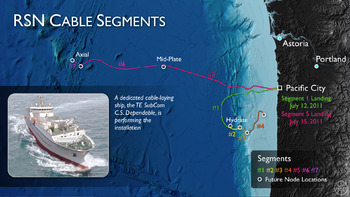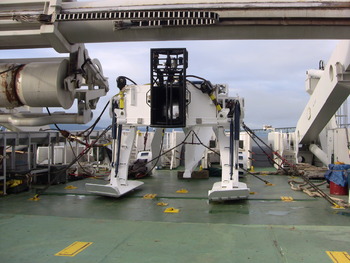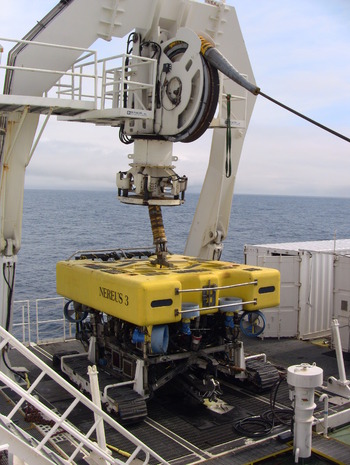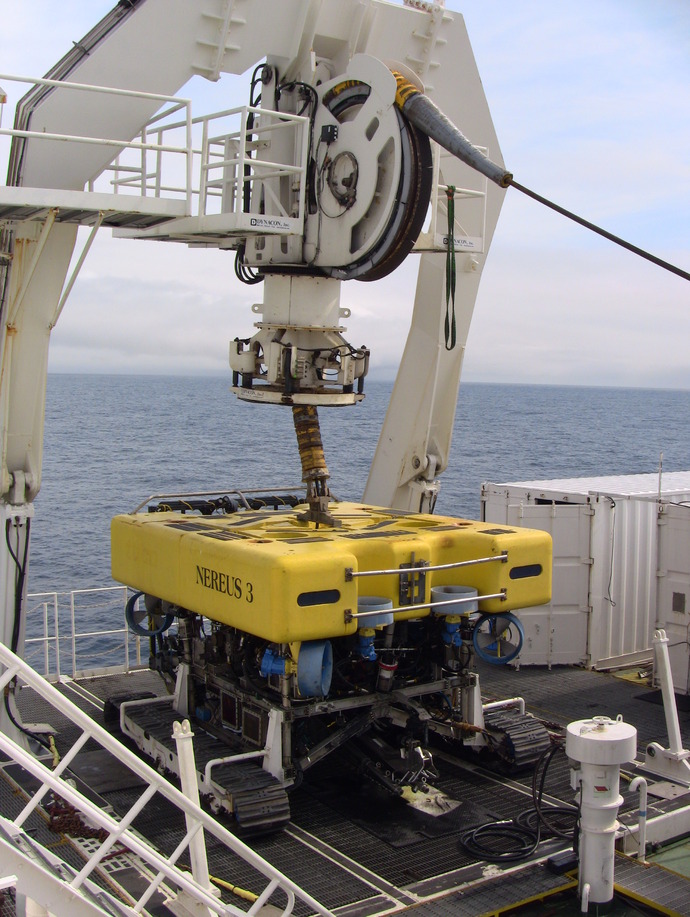
The OOI cable for the regional component is being laid in segments, as shown on this graphic.

Cable Installation Segments

Seaplow sitting on the back deck of the TE SubCom Dependable. The seaplow is deployed from the ship and used to bury the cable in the seafloor. All portions of the cable from the shore to a distance of about 1 km (.6 mile) seaward of the 700-fathom (4200-feet) Essential Fish Habitat boundary (EFH) will be buried.
-- Photo by Cecile Durand, University of Washington, onboard the TE SubCom Dependable.

Seaplow on back deck
We have successfully completed burial on Segment 1!
Despite lousy weather, our installation team has managed to obtain very good burial so far along Segment 1, even around 1800ft (600m) water depth where our survey data showed seabed conditions would be somewhat challenging. Overall, using the plow, we have achieved our target depth of burial (4 ft or 1.3m below seabed) along the cable route, except in isolated spots closer to shore at depths less than 270 ft (90m). We will go back to these spots to inspect and confirm burial and/or improve it, if necessary and possible, using our ROV (pictured in image above).
I talked to the F/V Jaimie K. (our current guard boat) to get more info on the device that was observed floating around our vessel and was then picked up a couple days ago. Stickers and other info printed on the bright yellow buoy-looking object indicate may be part of the Pacific Ocean Shelf Tracking project that is managed by the Vancouver Aquarium in Vancouver, BC. Apparently UW is a partner in this research! I have contacted the appropriate parties to arrange for delivery.
--Cecile Durand, OOI Maintenance Operations Manager, University of Washington, onboard the TE SubCom Dependable


